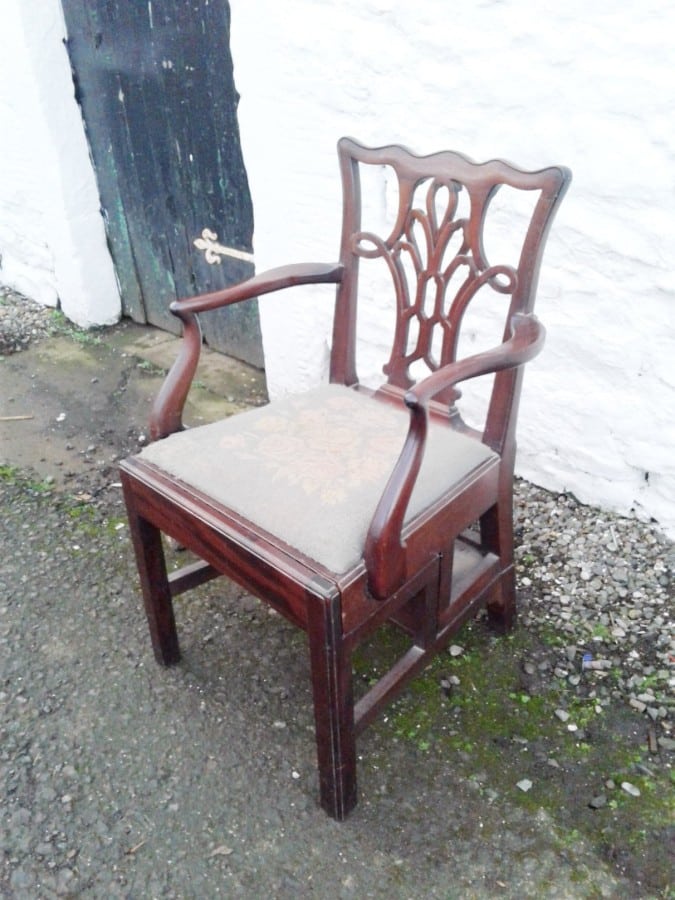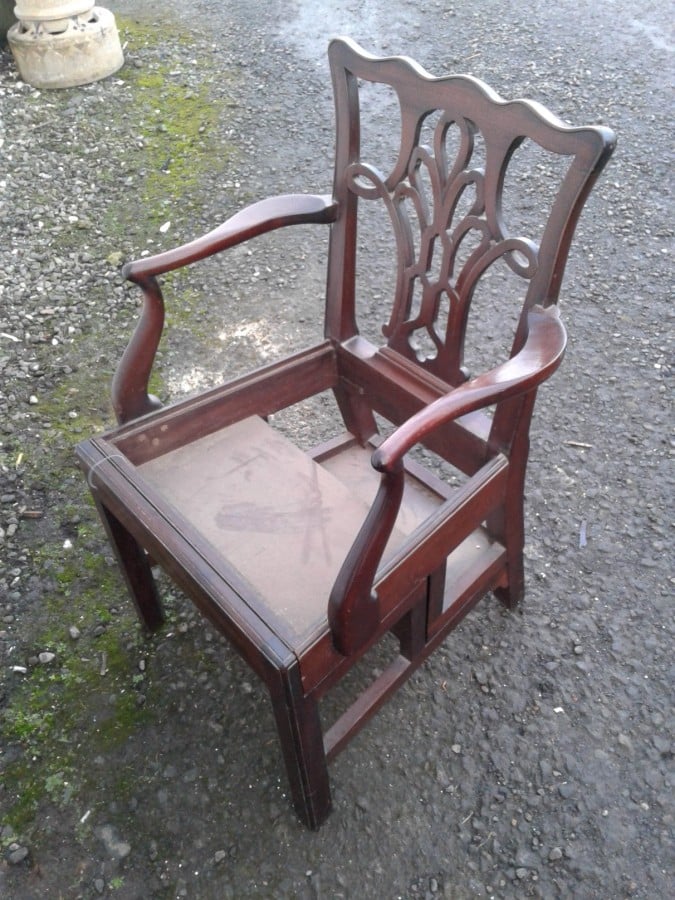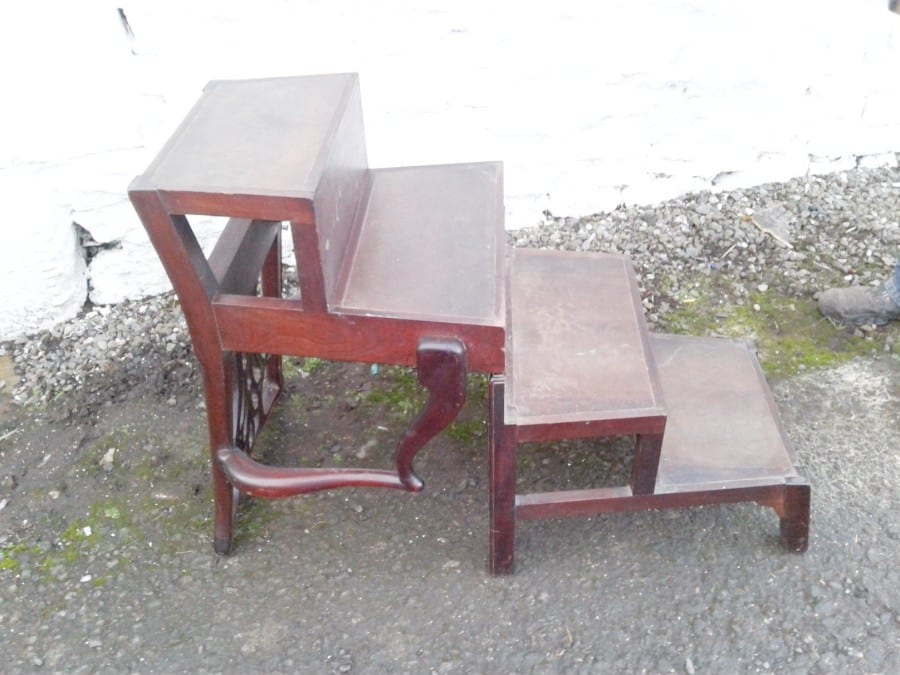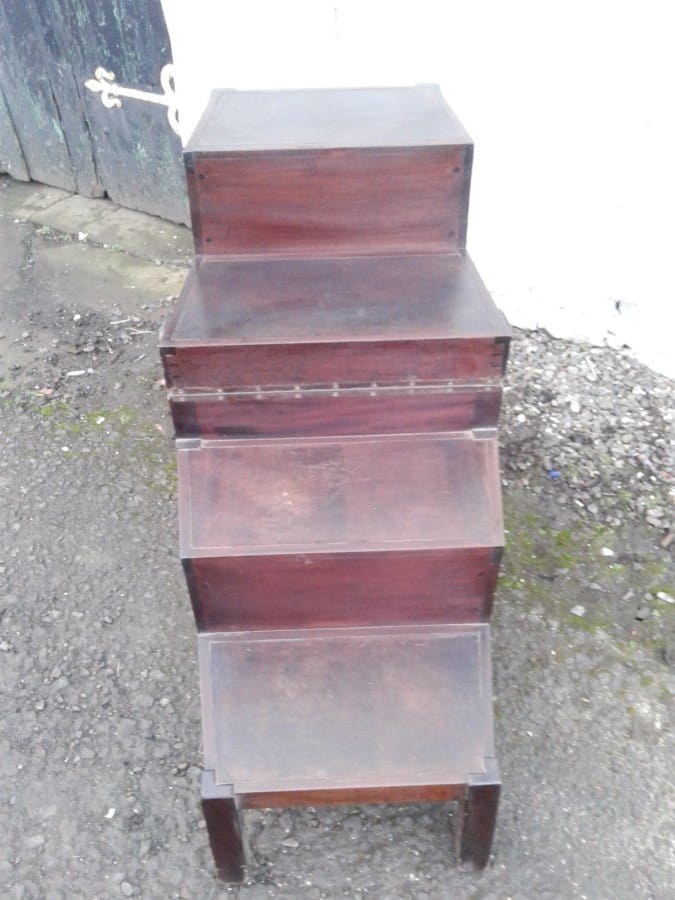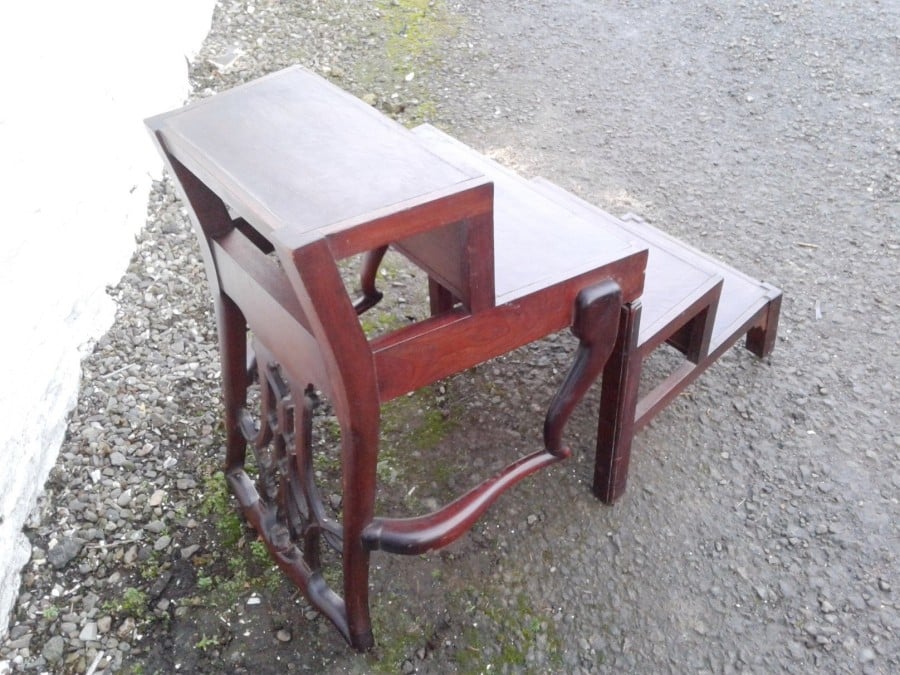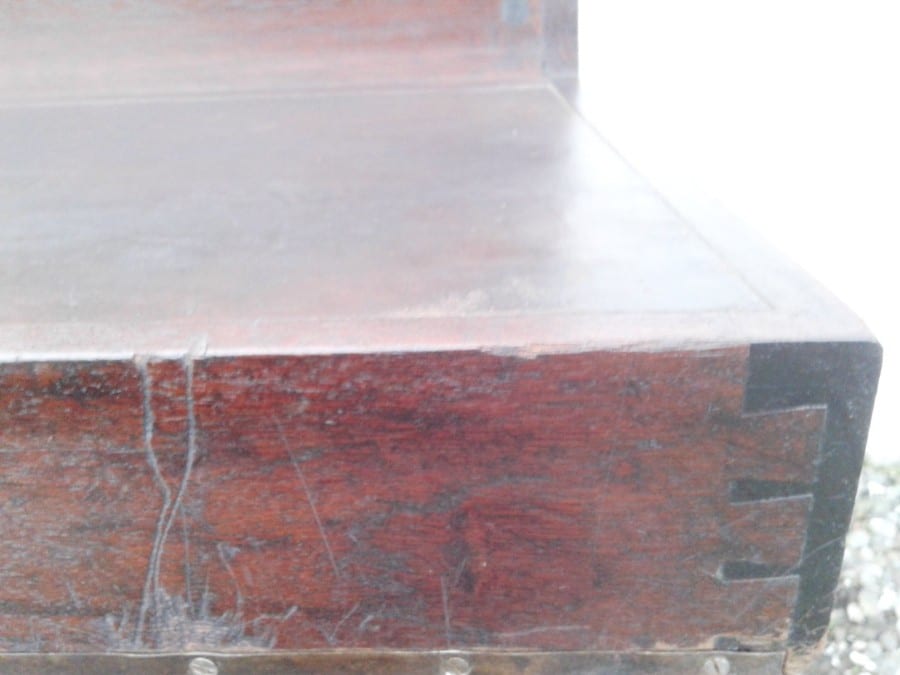Description
George III styled mahogany library step chair
This library step chair is 1 of 2 made in our workshops around 20 years ago. One was a private commission. This one we kept. The thing about making a chair like this is if you are going to make 1 you should make at least a pair. As with all chairs, the chair is made firstly on a drawing board (actual size) showing all views. From there all the component parts are measured and cardboard cut outs made. At this point you are half way to your chairs completion. The cost of the second chair starts at this point, saving half the time. generally speaking all of the hand worked parts are generated with a further 20% time saving. As the more you do exactly the same movements the faster the processes become.
We once had to make 54 Victorian styled restaurant tables 216 legs. The first of which took 7 minutes, the last of them came off the laithe within 3 minutes. The trick for efficiency and identical repreats whether it be turning legs on a laithe or carving/crafting chair crest rails for a long set of chairs on a bench. Get your eye in and do as much and as many as you can in one stint. Even a 10 minute brake will mean the next one you attempt will most likely be slightly different. Once your eye is in, STAY ON THE JOB. You will find it so much easier, up to speed maintaining identical repeats and they will have the best chance of being identical repeats without more hours waisted binning thin ones and re benching the fat ones. Most of the work making such chairs is not crafting or endless mortise and tenons, its what you do on the draft board determines weather the chairs come out as beauty or beast.
Get the beauty out on the draft board and a balanced beautiful chair will be your reward once constructed. This particular design was never going to be a friend to man, it took much time to get the look right on the board. it’s potencial was to become a useful ugly duckling, over built or unballanced. Maintaining that delicate balance with such a deep front seat rail being unavoidable having to be half of the step depth. You will notice the front seat rail is reduced with a chamfer along the bottom edge, angled backwards to reduce the depth of the front rail, also a top moulded outside edge to give the effect of a better balanced chair. without this subtle but visually apparent reduction of the front rail, this chair would have looked more like a toilet seat than a fine library chair.. Everything about a chair is about balanced proportions. this was a tricky one but we nailed it and I still enjoy looking at it. 20 odd years later hence Not for sale.
Tricks of the fine chairmaker 18th century styley.
Your tools. A small block of palm sized wood and a steel straight cut screw ! A scraper and a wide blade chizel.
The JOB The raised beading that runs the outside edge of the back legs and crest rail This is attained with a ordinary size 10 straight cut steel screw. Screw the screw into the centre of a 1″ round 3inch long or small blocked piece of wood at about an inch from the end. leave it about 3/16th” proud. Turn the screw so the draft faces down when pressed to the leg, run the screw draft up and down the outside edge, the screw draft acts like a grooving chizel and the inside of the bead will start to appear, the inner round of the bead being developed by the screw head under angle. Par the outer edge off with scraper and you bead is complete, Now par the inside faces down with wide chizel and scraper to bring the bead proud, and your bead with reduced front faces is complete. Same technique to create the front leg and rail mouldings. a simple steel 8/10/12 screw and a small block of wood will help create all kinds of edge beading, reeding fluting. Most useful for near instant cockbeading. Simple no fancy anything. Just as it was done circa 1745. And the only way to do it if you want your chair to ozz charm and not look manufactured, I maintain the humble screw technique is as fast as any modern machining can achieve and gives a no contest end result too.

